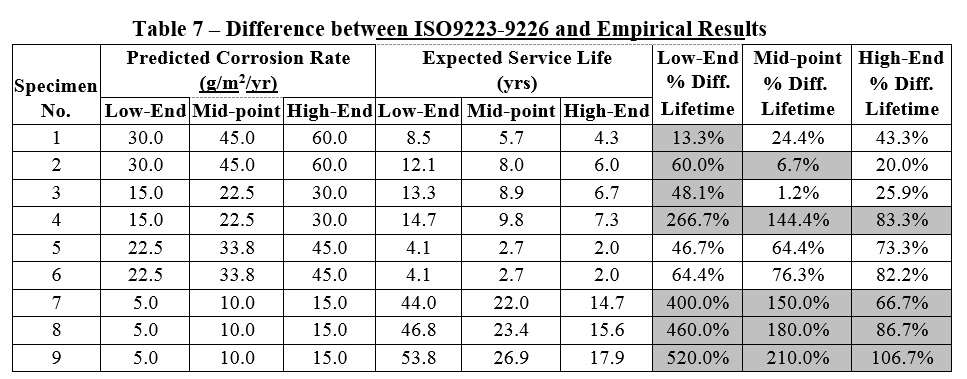M.D. Hagel1 and S.L. Lissel2
- PhD student, Dept of Civil Engineering, University of Calgary, 2500 University Dr. NW, Calgary, AB, T2N 1N4, markdanielhagel@shaw.ca
- Assistant Professor, Dept of Civil Engineering, University of Calgary, sllissel@ucalgary.ca
ABSTRACT
The issue regarding the corrosion of steel ties connecting brick veneer to a steel stud (BVSS) backup is well known and well documented. However, none of the research to date has developed corrosion rate and service life models specific to wall ties in BVSS systems. In this paper, the corrosion rate and service life estimates, produced by two models developed by the International Standards Organization (ISO), were compared to the empirically determined corrosion rates and service lives of nine zinc galvanized tie specimens taken from five buildings located in four different Canadian cities. It was discovered that both models relied heavily upon the judgement of the designer to account for the environment of the ties in the wall cavity. The best estimate, using actual environmental data for inputs, was discovered to be the ISOCORRAG formula using the high-end of the range for inputs. Here, the high-end range of inputs is defined as those that generated the largest (most rapid) corrosion rate and smallest (shortest) expected service life. Using the high-end of the range, the expected service life of the ties determined by the ISOCORRAG model produced a better estimate than the ISO 9223-9226 for 67% of the specimens. This method produced a maximum difference of 102% and a minimum difference of 18.4%. Under the same assumptions, the ISO 9223-9226 produced estimates with a maximum difference of 107% and a minimum difference of 20%. Given that the maximum difference for predicting the expected service life was so large, a better understanding of the mechanics governing the corrosion of a tie embedded in mortar is necessary. A semi-empirical, stochastic model is a more suitable model for predicting the complex and random nature of the corrosion of steel components in BVSS wall systems.
KEYWORDS: Corrosion Rate, ISOCORRAG, Stochastic Corrosion, Service Life, Connector Durability
1b-3



